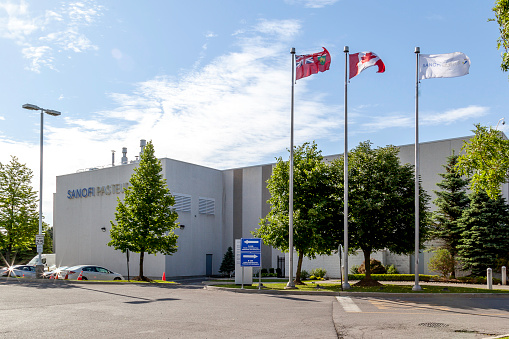Bio Clean Services Inc is proud to complete all passivation, chemical treatment and inspections on Canada’s biggest vaccine injectable building. Sanofi Pasteur ltd. located in North York Toronto has invested $750 Million into Canada’s biggest vaccine injectable production building. BCS Inc passivated over 17 miles of stainless piping welded by Stainless Piping Systems (SPS). Ellis Don’s biggest Canadian project was completed with ease in 2020.
Working with the best engineers in the industry, BCS Inc completed passivation following ASTM A380 to systems throughout Building 100;
HWFI, AWFI, PW, Clean Steam, CIP Systems and Piping, Production Systems, Waste Treatment, Water Production Systems, Interconnecting Piping.
BCS Inc. have developed cleaning technologies that set standards in the Pharmaceutical industry.
Category: Uncategorized
Understanding Quality Control and Thorough Documentation
Registered to ISO 9001:2015; we provide quality documentation and packaging as required for every project.
BCS Inc. is proud to facilitate fully trained and certified passivation technicians with a proven track history. Our Standards meet FDA requirements. BCS INC crews mobilize to site with all needed equipment to complete the needed cleaning project with upmost safety and confidence. All chemical is removed from site by BCS INC for treatment or disposal if necessary.
BioFilm is a bacterial build up which causes big issues in industries, See how BCS can help with a Preventative Maintenance Program
BioFilm and Bioburden issues can have massive effects on product and equipment maintenance.
Bio Clean Services offers preventative maintenance programs which helps prevent the growth of internal bacteria of stainless steel systems. With proven procedures BCS have developed cleaning technologies that prevent and maintain stainless steel systems from corrosion and deterioration.
Contact us today to discuss preventative maintenance programs to improve quality assurance and quality control.
Understand the fundamentals of Derouging and the preventative measures to control stainless steel systems.
Derouging
Rouge is a type of surface corrosion adhered to stainless steel surfaces.
Rouging is an ongoing maintenance issue for industries that operate stainless steel systems with high purity water running at elevated temperatures. The combination of high temperature and pure water or steam will often allow the formation of iron oxides that proliferate throughout the systems in question creating a reddish layer on the surface of the stainless steel. An organic layer can form atop of the iron oxide to make removal more difficult. The surface corrosion may eventually contribute to increased microbial contamination and further deterioration of the stainless surface. Contamination in systems could eventual build into bioburden issues, causing BioFilm and bacterial growth in systems alike.
Bio Clean Services Inc. have developed cleaning technologies that will in fact keep stainless steel systems and surfaces free of bioburden issues. Our proven procedures clean systems without deteriorating the stainless steel surface or RA finishes. BCS Inc provides a preventative maintenance program which offers cleaning procedures to allow our customers systems and equipment to continue to operate without surface corrosion or rouging.
Typically there are 3 Classes of Rouge: (defined in ASME BPE-2016 Bioprocessing Equipment)
Class 1- rouges are weakly attached to the surface and relatively easily removed and dissolved. This rouge is generally hematite or red ferric iron oxide with low levels of other oxides or carbon content.
Class 11- rouge consists mostly of hematite or ferric iron oxide with some amount of chromium and nickel oxides as well as small carbon content. Class 11 rpuges are more difficult to remove than class , and may require additional time, even though these processes are often run at slightly higher temperatures and increased concentrations.
Class 111- is much more difficult to remove compared to Class 1 and Class 11 rouge, both due to its chemical composition difference and its structural difference. These high temperature deposits form magnetite iron oxide with some substitution of chromium, nickel, or silica in the compound structure. Significant amounts of carbon are generally present in these deposits due to reduction or organics present in the water, which sometimes produces the “smut” or black film that may form during derouging. The chemistries used to remove this rouge are very aggressive and will affect the surface finish to some degree.
Rouging may occur but not limited to these systems:
- Product & Distribution Piping
- Water For Injection (WFI) Tanks & Stills
- Bioreactors, Fermenters, Lyophilizers
- Clean Steam Generators & Clean Steam Systems
- Sterilizers and Autoclaves
- Reverse Osmosis, DI, Pure Water
- Process, Storage Vessels & Tanks
- CIP – Clean in Place
- Heat Exchangers and Boilers
- Tubing and Hoses
- Spools, Flanges, Gaskets
- Valves
- Gauges
- Components and Hardware
- Stainless Steel parts or Equipment




